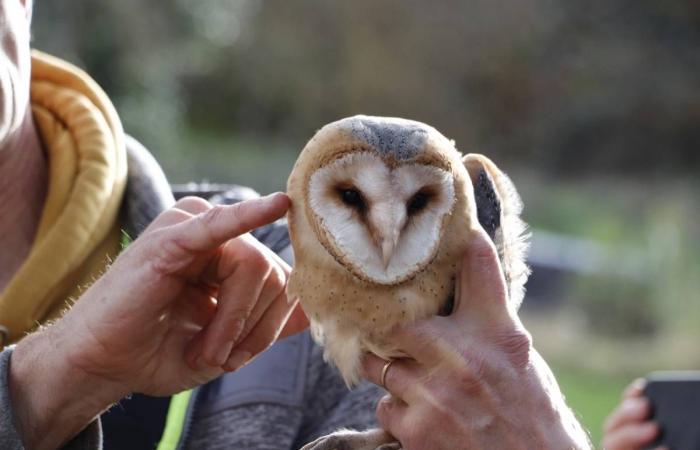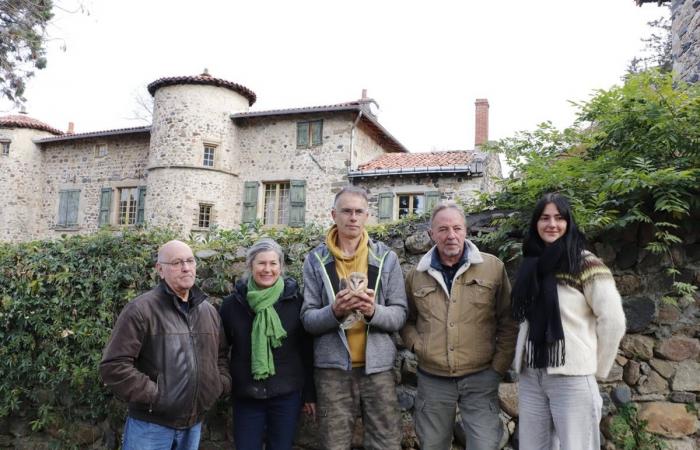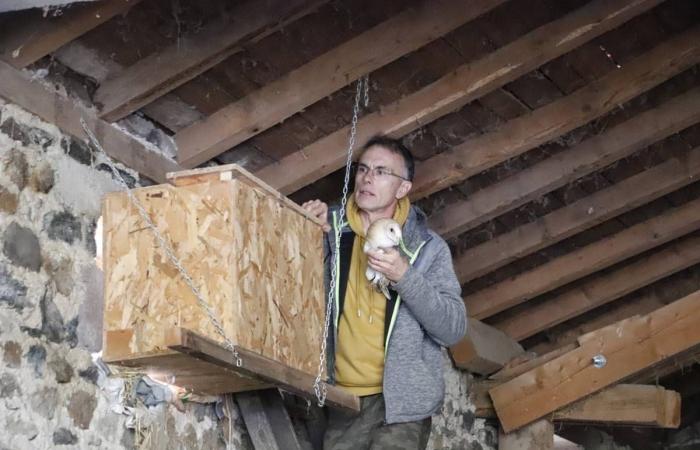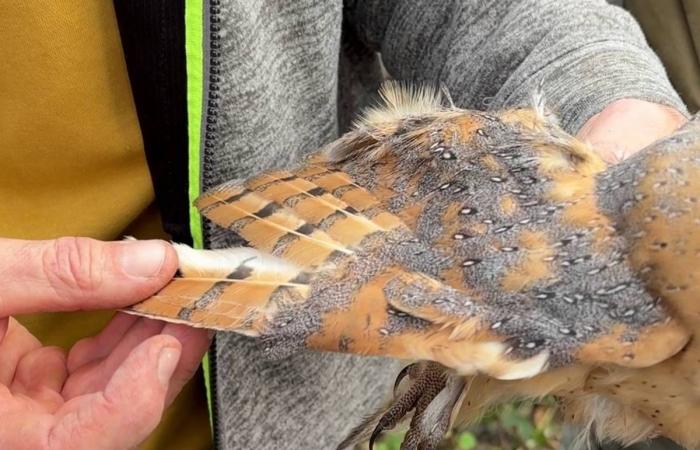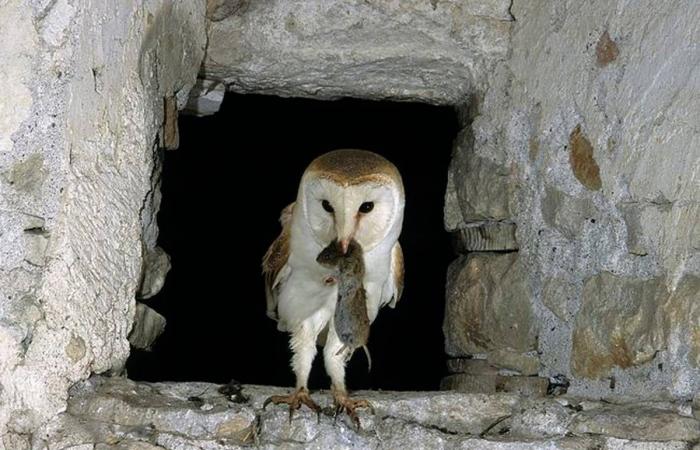At the start of the week, the League for the Protection of Birds (LPO) released five young barn owls, a small owl threatened with extinction, in the towns of Rosières and Monteil. Focus on this beautiful story which began in an attic in the Cher department, where siblings who had fallen from the nest were found…
During the official presentations to the press, all the smartphones and cameras were focused on her: a barn owl two months old and barely 300 grams that Franck Chastagnol, project manager at the League for the Protection of Birds ( LPO), held in the palm of his hands on Tuesday, before giving him his freedom.If the barn owl's heart-shaped facial mask “touches a lot of people”, it also and above all serves as a “parable”, indicates Franck Chastagnol, project manager at the League for the Protection of Birds. “It amplifies sounds, which ensures that this owl can perfectly locate mice in the grass.”
Moving if not spectacular
this release at Durianne Castle, in the town of Monteil, was first of all a happy ending, the end of a beautiful story. Ones that the bird protection association never tires of publicizing. A few months after the rescue of a red kite in Haute-Loire, the barn owl was this time the star.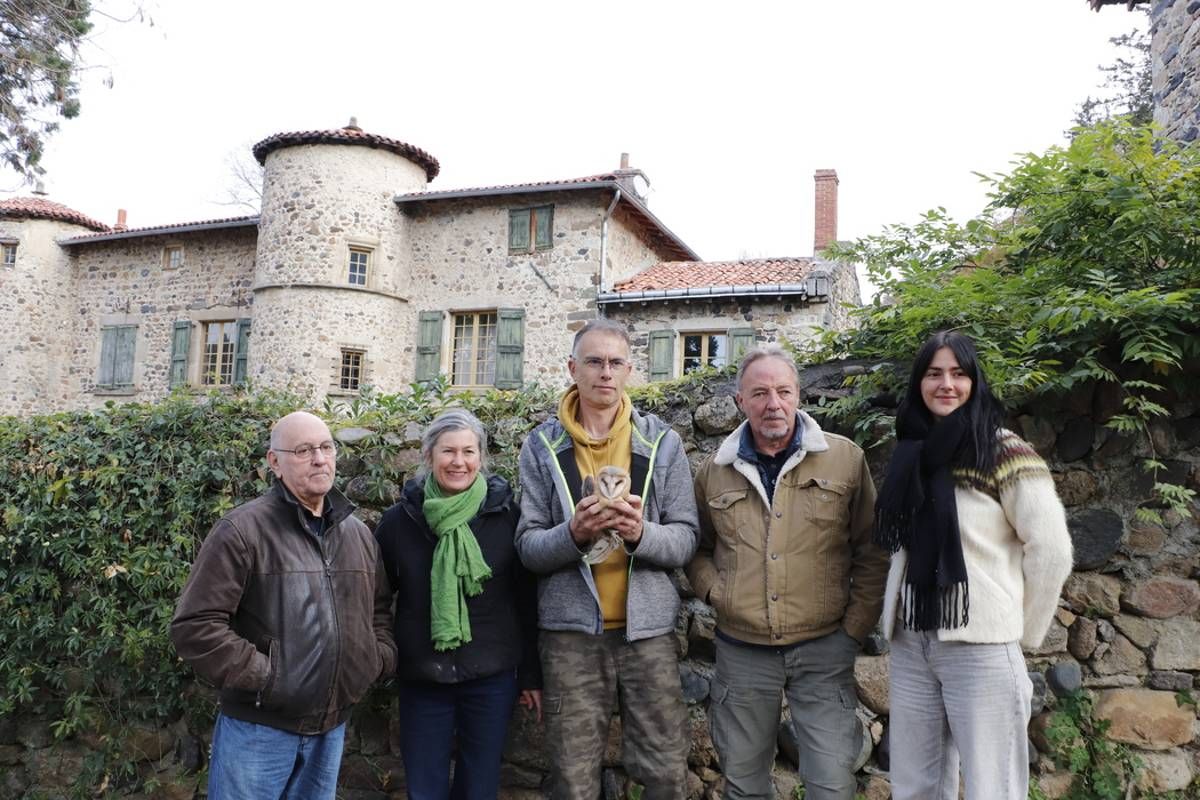 She and her peers – there were four of them – “were found small, in an attic, in the Cher department,” relates Franck Chastagnol. Having fallen from the nest, they were repatriated by volunteers to the LPO rescue center, located near Clermont-Ferrand.” Another young bird of prey, of the same species, joined them there to be cared for and brooded. There, in the aviaries of the Clermont clinic, the five individuals “proved themselves”. After a month of captivity, they were declared “fit” to fly on their own…
She and her peers – there were four of them – “were found small, in an attic, in the Cher department,” relates Franck Chastagnol. Having fallen from the nest, they were repatriated by volunteers to the LPO rescue center, located near Clermont-Ferrand.” Another young bird of prey, of the same species, joined them there to be cared for and brooded. There, in the aviaries of the Clermont clinic, the five individuals “proved themselves”. After a month of captivity, they were declared “fit” to fly on their own…
One of the two releases was carried out in a barn at the Château de Durianne, in Monteil.
Receive our leisure newsletter by email and find ideas for outings and activities in your region.
“A great reward” “We released three yesterday (Monday evening, Editor’s note) in Rosières, at Claude Verots, on a farm that welcomes biodiversity.” The next day, Tuesday, Françoise du Garay's barn in Monteil, in turn, housed part of the siblings: two young owls. “A great reward” for the chatelaine, who for 20 years has been working to create, on her land, a safe shelter for endangered species of fauna and flora. “We chose the Durianne farm to release these birds before the bad weather sets in, because a nest box was already installed there,” explains the LPO project manager, “and because it is an organic farming operation.” . It is not exposed to pesticides like other sectors of Haute-Loire.” The geographical position of Durianne Castle also weighed in the balance. This is located in the Loire Valley, a “fairly open” environment, between gorges and meadows, which “corresponds quite well to the preferred area” of the barn owl. “This is a species that has difficulty living above 800 meters of altitude because of the cold and the frost which limits its prey,” explains Franck Chastagnol.
“We released three yesterday (Monday evening, Editor’s note) in Rosières, at Claude Verots, on a farm that welcomes biodiversity.” The next day, Tuesday, Françoise du Garay's barn in Monteil, in turn, housed part of the siblings: two young owls. “A great reward” for the chatelaine, who for 20 years has been working to create, on her land, a safe shelter for endangered species of fauna and flora. “We chose the Durianne farm to release these birds before the bad weather sets in, because a nest box was already installed there,” explains the LPO project manager, “and because it is an organic farming operation.” . It is not exposed to pesticides like other sectors of Haute-Loire.” The geographical position of Durianne Castle also weighed in the balance. This is located in the Loire Valley, a “fairly open” environment, between gorges and meadows, which “corresponds quite well to the preferred area” of the barn owl. “This is a species that has difficulty living above 800 meters of altitude because of the cold and the frost which limits its prey,” explains Franck Chastagnol.
The owl likes bell towers, hence its name. But the closure of these pushes the owl to find other homes. To help, the LPO “freely places nest boxes on farms or in individuals who have a barn”.
This is not the first time that specimens have taken off again from Durianne Castle. “We had already released some five or six years ago, but more will be needed,” says the LPO spokesperson. Because the barn owl has become rare in the Altiligrian landscape. “Even in the 1980s, it was the most common species,” says Michel Vernaudon, an enthusiast who photographs wildlife. We saw it in every village.” Today, the small, “very discreet” nocturnal bird of prey is in decline. “The species,” adds Franck Chastagnol, “is threatened, and it is even more so in Haute-Loire.” The fault lies in the closing of bell towers, the restoration of old buildings, the insulation of attics, the cutting down of hollow trees in the gardens which progressively impoverish the accommodation possibilities, but also in road traffic, “the one of the biggest factors in mortality”, and the persistence of certain popular beliefs… “Even in the 20th century, this owl was nailed to barn doors to ward off bad luck.
In Haute-Loire, football referees will be equipped with cameras during so-called “sensitive” matches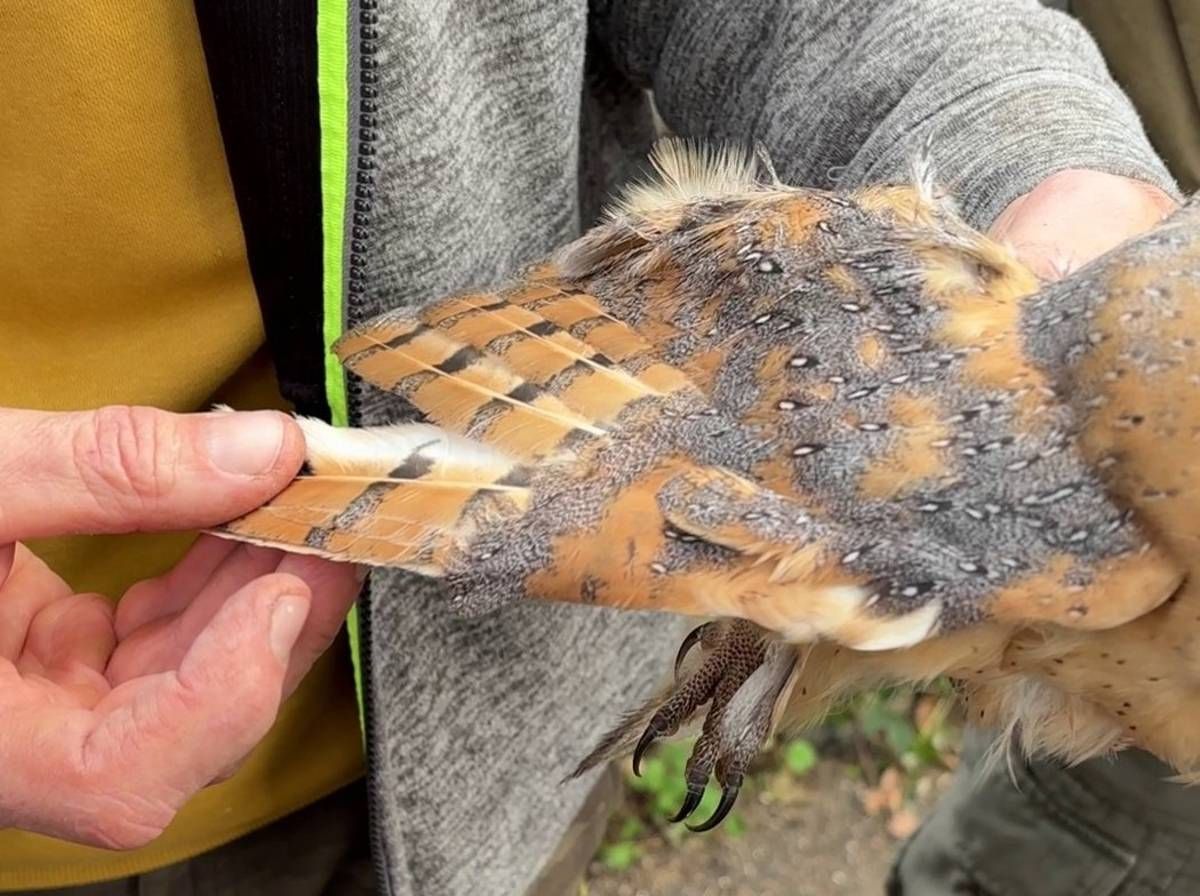 It has been protected since 1976, but superstitions persist in the countryside.” And if its heart-shaped facial mask touches lovers of beautiful photos of the wild world, its presence in the attics is disturbing and sometimes annoying. “When the barn owl breeds, it blows. He says: “shhhhhh”, mimes Franck Chastagnol, which can cause problems at night, or even frighten him, hence his name”… and the calls made to LPO volunteers to recover the broods (in the best case scenario).
It has been protected since 1976, but superstitions persist in the countryside.” And if its heart-shaped facial mask touches lovers of beautiful photos of the wild world, its presence in the attics is disturbing and sometimes annoying. “When the barn owl breeds, it blows. He says: “shhhhhh”, mimes Franck Chastagnol, which can cause problems at night, or even frighten him, hence his name”… and the calls made to LPO volunteers to recover the broods (in the best case scenario).
The barn owl, with a wingspan of “1.90 meters” as an adult, has “comb-shaped feathers” on the front of its wings, which provide it “silent flight to surprise its prey on the ground “.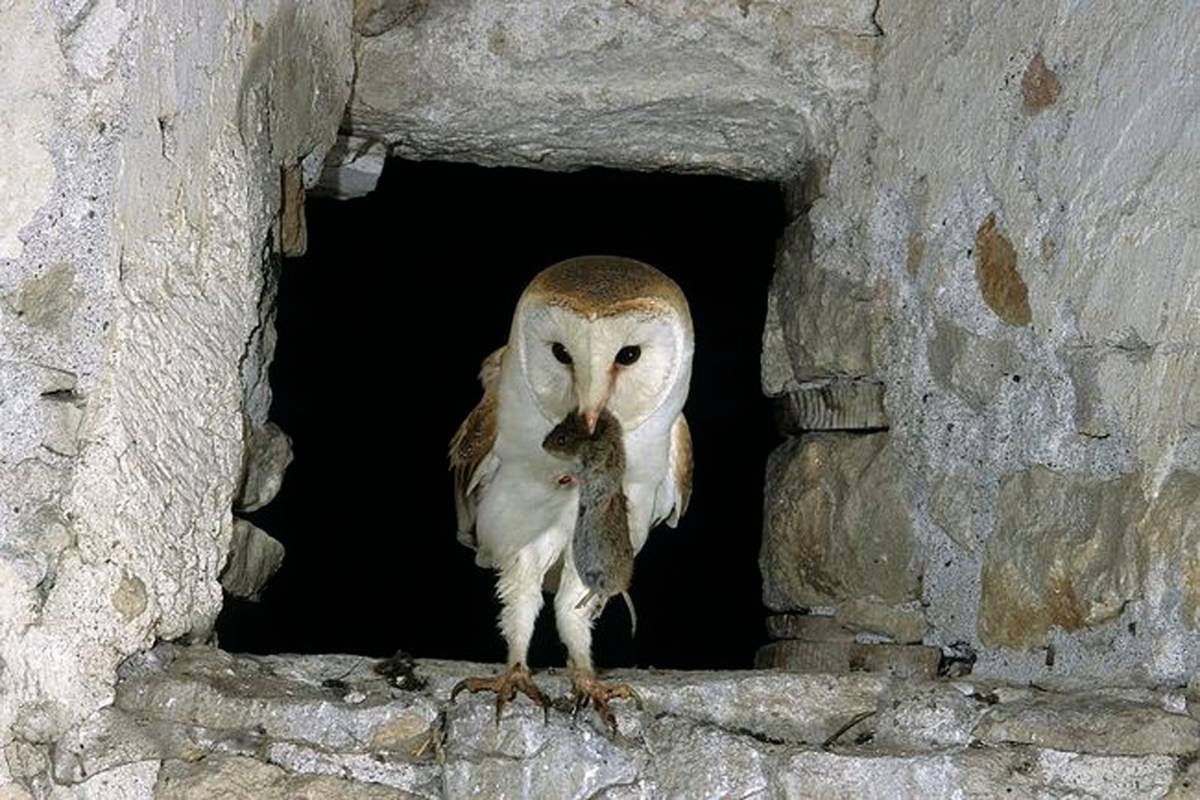 Hunted, rejected, unloved by some and adored by others, these birds are now only a handful in the department. “We think there are fewer than 20 or 30 couples in Haute-Loire. And we don't know where they are. The species is difficult to understand because it does not sing unlike the tawny owl or the eagle owl. We have very few broods, adds Franck Chastagnol. The last reproduction we witnessed was in Lavoûte-sur-Loire, four or five years ago. There was another in Brivadois, but it is very rare”; Reason why the release, at the beginning of the week, of five barn owls into the sky of Haute-Loire was a small event, far from being trivial in the eyes of naturalists. It brings hope to them. “We must support the population through releases like these. There are so many ills from which she suffers…” What will happen to these young raptors who have regained their freedom? Franck Chastagnol cannot say.
Hunted, rejected, unloved by some and adored by others, these birds are now only a handful in the department. “We think there are fewer than 20 or 30 couples in Haute-Loire. And we don't know where they are. The species is difficult to understand because it does not sing unlike the tawny owl or the eagle owl. We have very few broods, adds Franck Chastagnol. The last reproduction we witnessed was in Lavoûte-sur-Loire, four or five years ago. There was another in Brivadois, but it is very rare”; Reason why the release, at the beginning of the week, of five barn owls into the sky of Haute-Loire was a small event, far from being trivial in the eyes of naturalists. It brings hope to them. “We must support the population through releases like these. There are so many ills from which she suffers…” What will happen to these young raptors who have regained their freedom? Franck Chastagnol cannot say.
The barn owl “eats almost exclusively mice and field mice,” reports Franck Chastagnol. It happens, “in winter when there are no mice, that the owl falls back on the birds, but this is not common”. According to the project manager's estimates, a pair of owls devours, on average, “2 to 3,000 rodents per year”. This bird is especially present in Haute-Loire “in the Loire valley, the Puy basin, the Langeac plain and the Brioude sector”. […]The League for the Protection of Birds has not ringed them, nor even named them as it does for species subject to a reintroduction program, like the vulture. “These owls,” adds the professional, “are part of the 3,000 birds that the Clermont clinic releases each year. We don't baptize them
we don’t get attached to it.” The association's volunteers take care of them and offer them 4-star accommodation. It then remains to hope that their first flight in the skies of Haute-Loire will encourage them to stay permanently at the castle or wherever they please.
The barn owl being a nocturnal species, the owls were placed in a nest box, waiting for nightfall to make their first flight in the sky of Haute-Loire.Ophélie Crémillieux
France

